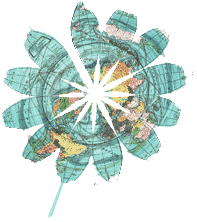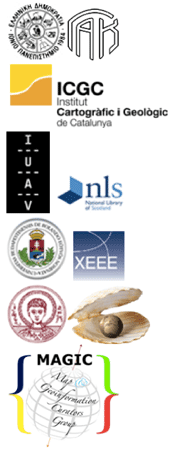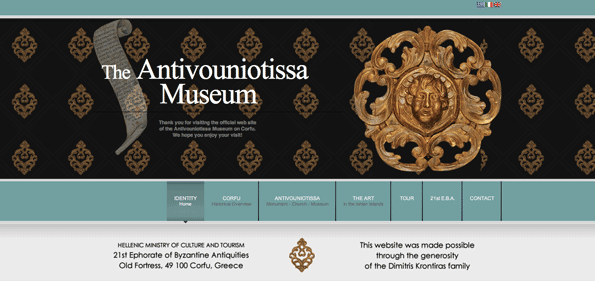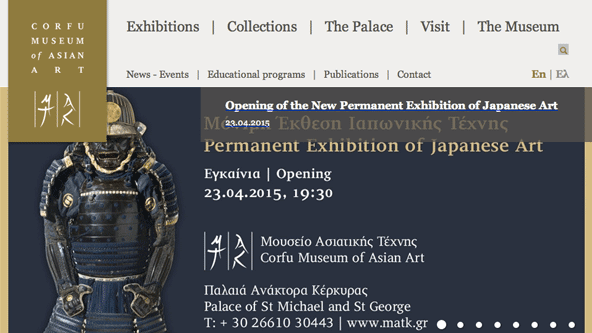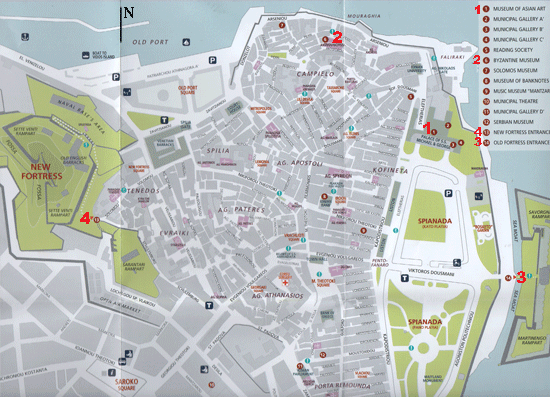What to see
The participants of the Conference can have free access to several places, worth visiting | map, in the Old Town of Corfu by showing their badge
- Old Town of Corfu, UNESCO/World Heritage
- Museum of Asian Art | Map | Wiki
- Antivouniotissa Museum | Map | Wiki
- Old Fortress | Map | Wiki
- Historical Archives, Map Exhibition
Thanks are due to the Head of 21st Ephorate of Byzantine Antiquities Ms D. Rigakou and to the Director of Museum of Asian Art Ms D. Zernioti for offering free access to the Museums under their authority
Spending time in the Old Town of Corfu
 Conference participants carrying their badge will be able to enter the Antivouniotissa Museum, the Old Fort with its Byzantine exhibition, as well as the Asian Art Museum free of charge from May 27th to May 30th
Conference participants carrying their badge will be able to enter the Antivouniotissa Museum, the Old Fort with its Byzantine exhibition, as well as the Asian Art Museum free of charge from May 27th to May 30th
The Old Town of Corfu, on the Island of Corfu is located at the North of the Ionian Sea in a strategic position at the entrance of the Adriatic Sea, and has its roots in the 8th century BC. The forts of the town, designed by renowned Venetian engineers, were used for four centuries to defend the maritime trading interests of the Republic of Venice against the Ottoman Empire. In the course of time, the forts were repaired and partly rebuilt several times, more recently under British rule in the 19th century. The mainly neoclassical housing stock of the Old Town is partly from the Venetian period, partly of later construction, notably the 19th century. As a fortified Mediterranean port, Corfu’s urban and port ensemble is notable for its high level of integrity and authenticity, and is listed as a UNESCO World Heritage site since 2007
Corfu’s old quarter, with its arcades facing the Spianada (Esplanade), its pastel-hued multi-storeyed dwellings, peaceful squares and slatted Venetian-style shutters, amply rewards any time spent strolling
The Archaeological Museum is remained closed for innovation works
 The map exhibition in the Historical Archives organised on the occasion of the Conference is a real must with unique manuscript cadastre plans and land registers of the Island's Baronies, from the late Venetian domination of Corfu (18th century). Open during the Conference days
The map exhibition in the Historical Archives organised on the occasion of the Conference is a real must with unique manuscript cadastre plans and land registers of the Island's Baronies, from the late Venetian domination of Corfu (18th century). Open during the Conference days
 Head to the charming Antivouniotissa (Byzantine) Museum; a 15th century church full of unusual icons of the 15th to 18th centuries, many of them painted by refugee Cretan artists who came here after the fall of Venetian Crete in 1669. Highlights include saints Sergios, Justine and Vakhos defeating a monster (1571) by master Michail Damaskenos; the life of St John the Hermit, from a few decades later; and a dramatic Noli Me Tangere (1657) by Emmanouil Tzannes. Open Tuesday to Sunday, 08.30 to 15.00
Head to the charming Antivouniotissa (Byzantine) Museum; a 15th century church full of unusual icons of the 15th to 18th centuries, many of them painted by refugee Cretan artists who came here after the fall of Venetian Crete in 1669. Highlights include saints Sergios, Justine and Vakhos defeating a monster (1571) by master Michail Damaskenos; the life of St John the Hermit, from a few decades later; and a dramatic Noli Me Tangere (1657) by Emmanouil Tzannes. Open Tuesday to Sunday, 08.30 to 15.00
 Neither should you miss the excellent Asian Art Museum, in the Palace of Saints Michael and George at the top end of the Esplanade. You will find exquisite Chinese, Japanese, South East Asian and Central Asian art collections, housed in a former palace, which also hosts worthwhile temporary exhibits – the one you will be able to visit is entitled "Drama and Desire in the pleasure quarters of Edo". The palace itself was designed by Colonel George Whitmore in 1819, and is an imposing neoclassical building, with its beautiful Doric colonnade, wide archway and Georgian style. Open Monday to Sunday, 08.00 to 20.00).
Neither should you miss the excellent Asian Art Museum, in the Palace of Saints Michael and George at the top end of the Esplanade. You will find exquisite Chinese, Japanese, South East Asian and Central Asian art collections, housed in a former palace, which also hosts worthwhile temporary exhibits – the one you will be able to visit is entitled "Drama and Desire in the pleasure quarters of Edo". The palace itself was designed by Colonel George Whitmore in 1819, and is an imposing neoclassical building, with its beautiful Doric colonnade, wide archway and Georgian style. Open Monday to Sunday, 08.00 to 20.00).
 The Paleo Frourio/Old Fortress contains, in its former Latin chapel near the entrance, a fine collection of Byzantine icons and mosaics rescued from various monuments around the island. It is the site of the original town of Corfu, with battlements and bastions to explore, plus another beautiful view of Corfu Town. Entrance from the Esplanade Square. Open daily 08.00 - 20.00
The Paleo Frourio/Old Fortress contains, in its former Latin chapel near the entrance, a fine collection of Byzantine icons and mosaics rescued from various monuments around the island. It is the site of the original town of Corfu, with battlements and bastions to explore, plus another beautiful view of Corfu Town. Entrance from the Esplanade Square. Open daily 08.00 - 20.00
Of the two forts, which bracket Corfu town, the Venetian-built Neo Frourio/New Fortess is an architecturally stunning work of military engineering, which affords superb views over the tiled roofs of the old town. Open daily 08.00 – 19.30
A favorite Corfiot pastime is a stroll on the Esplanade, a beautiful open public space full of trees, a band stand, monuments and a cricket field. If tired, one can sit in one of the fashionable cafes of the Liston with a coffee or a drink and watch people go by.
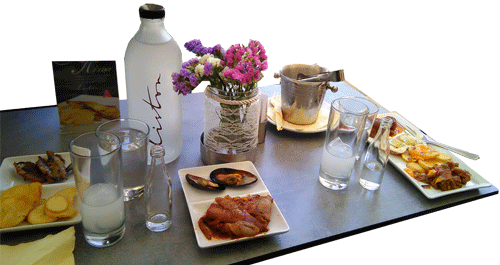
This building row with its arcaded terraces was built in 1807 by the French imperial commissioner Mathieu de Lesseps and is an excellent example of architecture from the Napoleonic period, when Corfu was part of the First French Empire. The design was inspired by the Rue de Rivoli in Paris.
Some other places of interest
Solomos Museum
A collection of the memorabilia and archives of the major Greek poet, Dionysios Solomos. 3rd Parados of Arseniou Street. Open 09.30 to 13.00 weekdays
Banknote Museum
One of the very few museums of its kind in the World, with a most comprehensive and highly informative collection comprising banknotes, sketches, essays and printing plates. Alpha Bank (frm. Ionian Bank), St. Spiridon Square. Open 09.00 to 13.00 Monday to Saturday.
Municipal Art Gallery
Exhibiting mainly Corfiot Artists of the 19th Century, as well as etchings and sculpture. Palace of Saints Michael and George, East Wing. Open 09.00 to 21.00.
Serbian War Museum
The Serbian Museum collects photographs and militaria commemorating the World War I – Macedonian/Salonica Front of 1915-17. Moustoxidi Street. Open on request only. Tel. Moraitis School of Languages, (+30) 26610 35615
Reading Society
The Corfu Reading Society was founded in 1836 and houses a fine collection of old books, documents and prints, mostly relating to the Ionian Islands in a beautiful building, designed by the renowned architect Ioannis Chronis. 120, Kapodistriou Street. Open weekdays 10.00 to 13.00.


